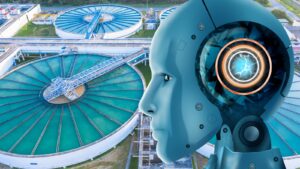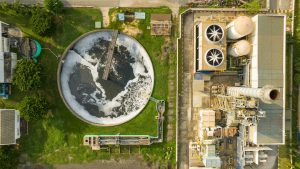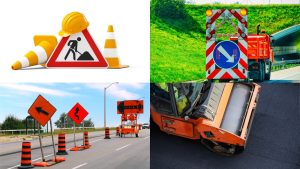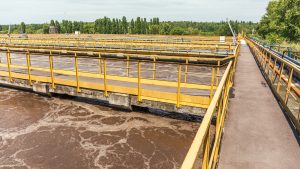Water is a resource we all depend on, but considering all the circumstances, don’t you feel like it is slipping through our fingers? Across the globe, ageing systems, poor planning, and inefficient technologies result in billions of water lost each year. Cracked pipes, outdated treatment plants, and unreliable distribution networks drain both water resources and budgets. So, the consequence is quite apparent. Wasted water, skyrocketing repair costs, and communities left vulnerable during droughts or floods. But it does not have to be this way. If the water management authorities put best practices into implementation, water infrastructure development has the potential to reach its best with time.
This article will explore the top best practices in water infrastructure management that are rising with the technology.
This article will explore the top best practices in water infrastructure management that are rising with the technology.
We will reveal
- Exploring Key Challenges in Water Infrastructure Development
- 6 Best Practices in Water Infrastructure Development
- Decentralised Water Treatment Solutions
- Comprehensive Water Resource Planning
- Innovative Financing Models
- Integration of Smart Water Technologies
- Proactive Maintenance and Upgrades
- Sustainable and Resilient Design
3. Implementing Good Practices in Water Infrastructure Development via Modern Tech
Exploring Key Challenges in Water Infrastructure Development
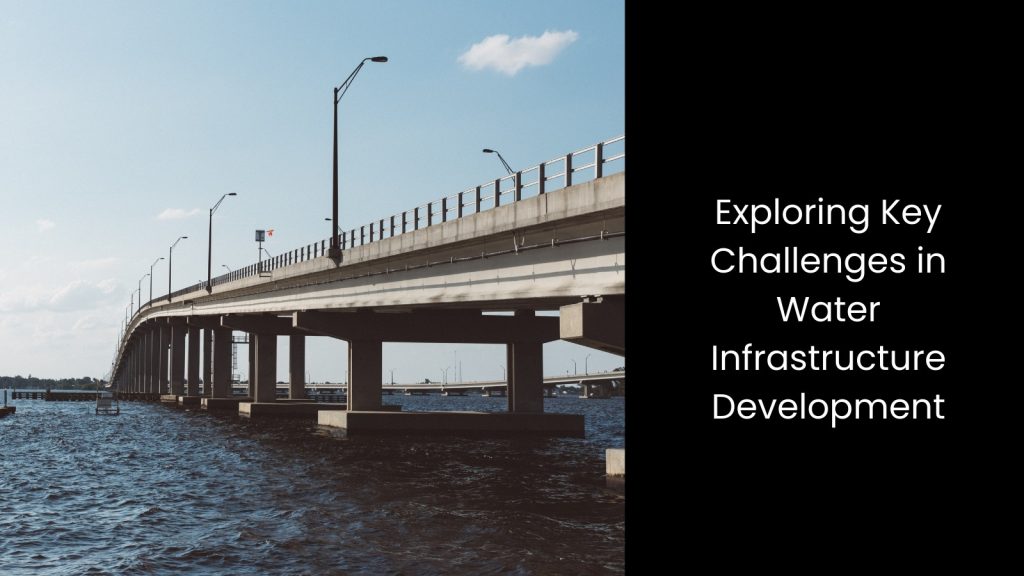
- Ageing infrastructure is indeed challenging, as many traditional water systems suffer from decades-old pipes, treatment plants, and reservoirs. This will lead to frequent leaks, inefficiencies, and costly repairs.
- The construction, maintenance, and modernisation of water infrastructure require significant financial investment.
- Water loss and leakage are another concern since outdated pipelines and inefficient distribution networks result in substantial water loss through leaks and bursts.
- Rising temperatures, changing precipitation patterns, and extreme weather events such as droughts and floods stress traditional water infrastructure.
- Another issue is rapid urbanisation because expanding populations in cities place immense pressure on existing water infrastructure, and this leads to shortages, overuse, and contamination risks due to inadequate system capacity.
6 Best Practices in Water Infrastructure Development
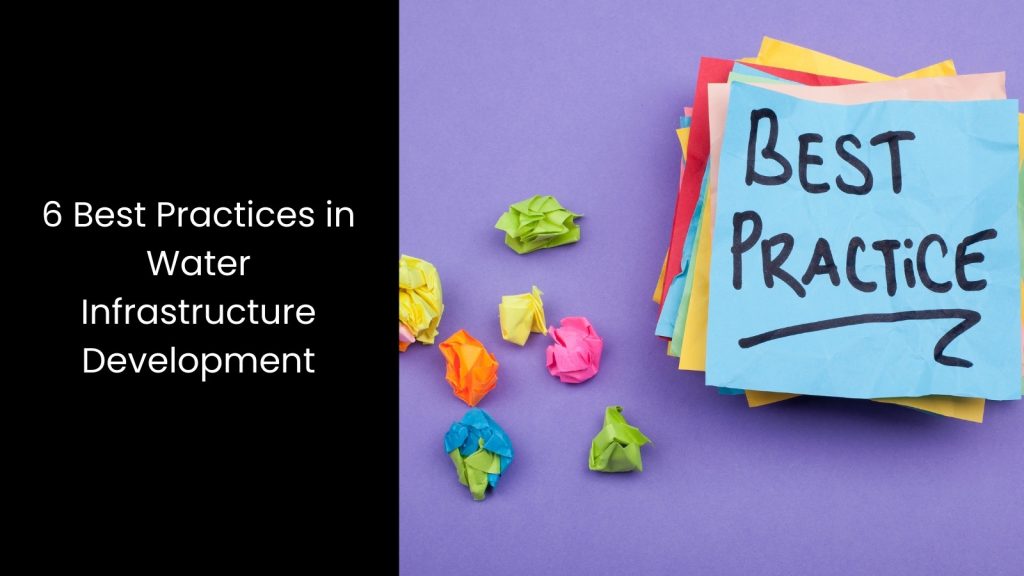
Decentralised Water Treatment Solutions
Decentralisation stands out as a smart approach in water infrastructure development as it brings clean water access closer to the communities that need it the most.
Instead of relying on massive, centralised facilities that struggle to serve remote or underserved areas, this strategy uses modular and portable purification units to treat water right where people live. These systems adapt to different environments, whether it is a rural village, a disaster-stricken region, or an off-grid settlement. It ensures a reliable and safe water supply without waiting for large-scale infrastructure upgrades.
Localised treatment not only cuts down on the time and cost of water distribution but also reduces the risk of contamination that usually occurs in long-distance pipelines. Advanced filtration, UV purification, and membrane technology help remove impurities, ensuring the water meets safety standards before consumption. Smaller, decentralised systems make maintenance easier since local teams can handle repairs and monitoring without complex logistics.
As water demand grows and climate challenges increase, decentralised solutions offer a flexible and efficient way to strengthen water infrastructure development.
Instead of relying on massive, centralised facilities that struggle to serve remote or underserved areas, this strategy uses modular and portable purification units to treat water right where people live. These systems adapt to different environments, whether it is a rural village, a disaster-stricken region, or an off-grid settlement. It ensures a reliable and safe water supply without waiting for large-scale infrastructure upgrades.
Localised treatment not only cuts down on the time and cost of water distribution but also reduces the risk of contamination that usually occurs in long-distance pipelines. Advanced filtration, UV purification, and membrane technology help remove impurities, ensuring the water meets safety standards before consumption. Smaller, decentralised systems make maintenance easier since local teams can handle repairs and monitoring without complex logistics.
As water demand grows and climate challenges increase, decentralised solutions offer a flexible and efficient way to strengthen water infrastructure development.
Comprehensive Water Resource Planning
What if water management authorities do not align the right resources with the right circumstances?
Water shortages, inefficient distribution, and long-term supply issues would quickly follow. Do you agree?
If they have implemented comprehensive water resource planning, these problems can be prevented by carefully assessing water availability, demand, and sustainability before making decisions. This process ensures that every drop gets used efficiently, whether for households, industries, or agriculture.
Smart planning also helps balance water use with environmental protection, keeping rivers, lakes, and underground reserves healthy for future generations. Water infrastructure development improves when planners build storage systems, upgrade pipelines, and introduce modern conservation techniques based on actual data.
This approach does not just focus on today’s needs; it looks ahead, preventing future crises before they happen.
Water shortages, inefficient distribution, and long-term supply issues would quickly follow. Do you agree?
If they have implemented comprehensive water resource planning, these problems can be prevented by carefully assessing water availability, demand, and sustainability before making decisions. This process ensures that every drop gets used efficiently, whether for households, industries, or agriculture.
Smart planning also helps balance water use with environmental protection, keeping rivers, lakes, and underground reserves healthy for future generations. Water infrastructure development improves when planners build storage systems, upgrade pipelines, and introduce modern conservation techniques based on actual data.
This approach does not just focus on today’s needs; it looks ahead, preventing future crises before they happen.
Innovative Financing Models
Financing is a major roadblock in water infrastructure development, and relying only on government budgets or traditional loans slows progress. This is where the innovative financing models solve this problem with their ability to tap into alternative funding sources like green bonds, impact investments, and international development grants.
So, the green bonds help raise money for eco-friendly water projects, allowing governments and private investors to fund upgrades without straining public funds. Impact investments attract businesses that care about both profits and social benefits, making water infrastructure stronger while ensuring fair access to clean water.
These funding options give cities the freedom to expand water treatment plants, install innovative monitoring systems, and improve distribution networks without waiting years for approvals.
Water demand keeps rising, and traditional funding methods cannot keep up, so fresh approaches like these keep projects moving.
So, the green bonds help raise money for eco-friendly water projects, allowing governments and private investors to fund upgrades without straining public funds. Impact investments attract businesses that care about both profits and social benefits, making water infrastructure stronger while ensuring fair access to clean water.
These funding options give cities the freedom to expand water treatment plants, install innovative monitoring systems, and improve distribution networks without waiting years for approvals.
Water demand keeps rising, and traditional funding methods cannot keep up, so fresh approaches like these keep projects moving.
Integration of Smart Water Technologies
Going beyond what traditional water technologies can offer, smart water technologies transform water infrastructure development. It makes systems more efficient, responsive, and reliable.
This is how it functions: IoT sensors track water flow in real-time, instantly spotting leaks or pressure drops before they become significant problems. AI-driven analytics study usage patterns, predict demand and adjust distribution to prevent shortages or wastage. Real-time monitoring gives operators a clear view of water quality, pipeline conditions, and treatment processes, allowing faster decisions that keep supply steady.
You know that the old systems rely on manual checks and reactive fixes, but smart technology removes the guesswork, reducing costs and preventing water loss. Cities and rural areas both benefit as these tools optimise water treatment plants, improve storage management, and prevent contamination risks.
It is undoubtedly evident that upgrading to intelligent systems means cleaner water, fewer disruptions, and more substantial infrastructure for the future.
This is how it functions: IoT sensors track water flow in real-time, instantly spotting leaks or pressure drops before they become significant problems. AI-driven analytics study usage patterns, predict demand and adjust distribution to prevent shortages or wastage. Real-time monitoring gives operators a clear view of water quality, pipeline conditions, and treatment processes, allowing faster decisions that keep supply steady.
You know that the old systems rely on manual checks and reactive fixes, but smart technology removes the guesswork, reducing costs and preventing water loss. Cities and rural areas both benefit as these tools optimise water treatment plants, improve storage management, and prevent contamination risks.
It is undoubtedly evident that upgrading to intelligent systems means cleaner water, fewer disruptions, and more substantial infrastructure for the future.
Proactive Maintenance and Upgrades
This is similar to having a high-skilled telescope in your hand, spotting tiny cracks before they become disasters.
Proactive maintenance and upgrades in water infrastructure development work the same way, preventing costly failures and service disruptions before they happen.
Routine inspections catch worn-out pipes, weak pumps, and hidden leaks early, allowing quick fixes instead of emergency shutdowns. Predictive maintenance uses smart sensors and data analysis to identify patterns warning operators when equipment needs repairs long before it breaks. Modernising ageing infrastructure, such as replacing outdated pipelines and upgrading treatment facilities, ensures a steady water supply without sudden breakdowns.
Gone are the days when old systems failed without warning, causing massive repair costs and disruptions for entire communities. Taking a proactive approach keeps everything running smoothly, reduces repair expenses, and improves water quality.
Proactive maintenance and upgrades in water infrastructure development work the same way, preventing costly failures and service disruptions before they happen.
Routine inspections catch worn-out pipes, weak pumps, and hidden leaks early, allowing quick fixes instead of emergency shutdowns. Predictive maintenance uses smart sensors and data analysis to identify patterns warning operators when equipment needs repairs long before it breaks. Modernising ageing infrastructure, such as replacing outdated pipelines and upgrading treatment facilities, ensures a steady water supply without sudden breakdowns.
Gone are the days when old systems failed without warning, causing massive repair costs and disruptions for entire communities. Taking a proactive approach keeps everything running smoothly, reduces repair expenses, and improves water quality.
Sustainable and Resilient Design
Climate is one of the most unpredictable elements, and it constantly challenges water infrastructure development, making sustainable and resilient design a necessity, not an option.
When droughts dry up reservoirs, floods overwhelm drainage systems, and storms damage pipelines, this leaves entire communities without safe water. Building climate-resilient infrastructure means designing systems that can handle these extremes without failing.
For example, permeable pavements and green infrastructure absorb excess rainwater, reducing flood risks while replenishing groundwater. Advanced desalination and rainwater harvesting provide alternative water sources during droughts, keeping supply steady even when natural reserves shrink. Stronger, corrosion-resistant pipes and elevated treatment plants prevent damage from rising sea levels and severe storms, ensuring continuous service.
Not to mention that ignoring climate challenges leads to expensive repairs, water shortages, and long-term environmental damage. The right design choices keep communities safe, resources sustainable, and systems prepared for the unexpected.
Thinking ahead and integrating resilience into every project ensures water security, no matter how unpredictable nature gets.
When droughts dry up reservoirs, floods overwhelm drainage systems, and storms damage pipelines, this leaves entire communities without safe water. Building climate-resilient infrastructure means designing systems that can handle these extremes without failing.
For example, permeable pavements and green infrastructure absorb excess rainwater, reducing flood risks while replenishing groundwater. Advanced desalination and rainwater harvesting provide alternative water sources during droughts, keeping supply steady even when natural reserves shrink. Stronger, corrosion-resistant pipes and elevated treatment plants prevent damage from rising sea levels and severe storms, ensuring continuous service.
Not to mention that ignoring climate challenges leads to expensive repairs, water shortages, and long-term environmental damage. The right design choices keep communities safe, resources sustainable, and systems prepared for the unexpected.
Thinking ahead and integrating resilience into every project ensures water security, no matter how unpredictable nature gets.
Implementing Good Practices in Water Infrastructure Development via Modern Tech
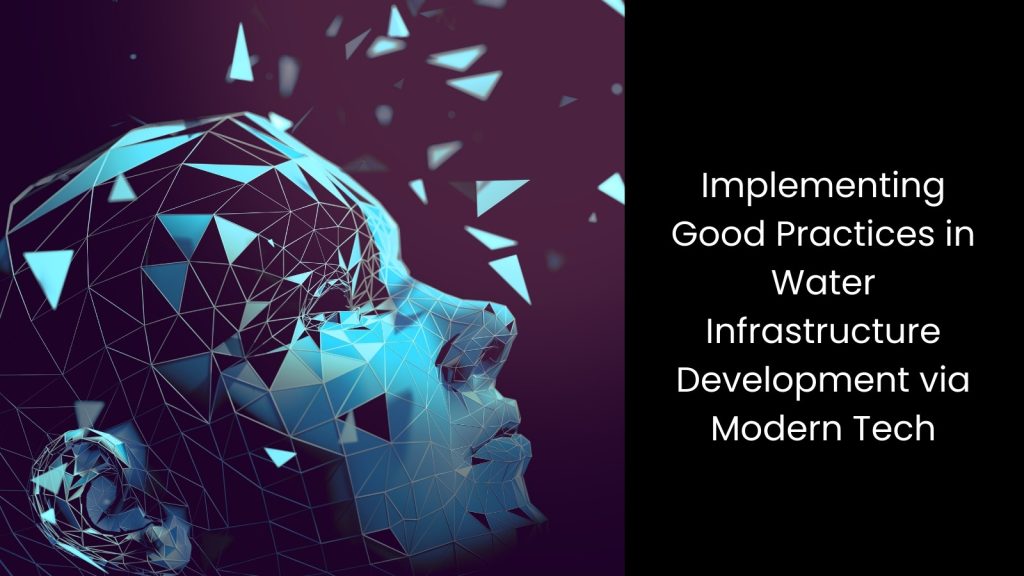
We expect you to understand that water infrastructure development is not just about laying pipes and building treatment plants. But it is about solving real problems with the right technology! Ignoring roadblocks leads to costly failures, but smart solutions like AI monitoring, predictive maintenance, and resilient designs keep systems strong. Understanding challenges and adopting modern technological solutions from a reputed software partner ensures clean, reliable water for generations.


